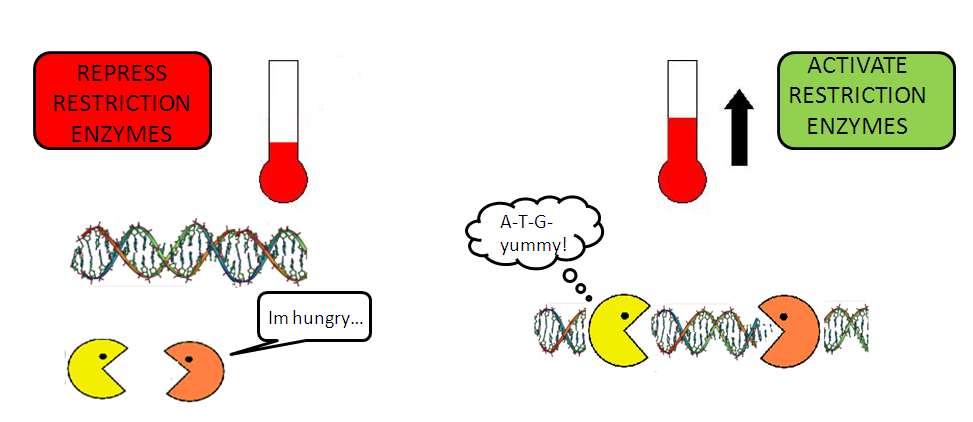Team:Imperial College London/Drylab/Genome deletion
From 2009.igem.org
(Difference between revisions)
(→Model for cell death) |
(→Our goals) |
||
| Line 31: | Line 31: | ||
===Our goals=== | ===Our goals=== | ||
| - | [[Image:II09_hitemp_lotemp.jpg|right| | + | [[Image:II09_hitemp_lotemp.jpg|right|400px]] |
We aim to: | We aim to: | ||
| Line 52: | Line 52: | ||
#2 pmid=10235623 | #2 pmid=10235623 | ||
</biblio>--> | </biblio>--> | ||
| - | |||
| - | |||
==Genome deletion== | ==Genome deletion== | ||
Revision as of 14:22, 18 September 2009

Genome Deletion
Based on the genetic circuit, we know that
- The lambda cI promoter is repressed by the protein cI that is produced constitutively under the strong promoter J23114.
- At 28°C, functional protein cI will bind to the lambda cI promoter to repress it. Restriction enzymes DpnII and TaqI will not be produced.
- When there is an increase in temperature (from 28°C to 42°C [http://www.ncbi.nlm.nih.gov/pubmed/15652426?ordinalpos=13&itool=EntrezSystem2.PEntrez.Pubmed.Pubmed_ResultsPanel.Pubmed_DefaultReportPanel.Pubmed_RVDocSum [1]][http://www.ncbi.nlm.nih.gov/pubmed/10235623 [2]]), there will be a de-repression of lambda cI promoter, causing restriction enzymes DpnII and TaqI to be produced.
Our goals
We aim to:
- Explore how temperature correlates to restriction enzyme concentration, and see how it affects the population of live cells, so as to characterise the effects of temperature on cell death.
- Develop a model of the number of dead cells as this correlates to our live and dead cells assay. (hyperlink to assay). From this, we can monitor the rate of killing and perform data analysis to obtain the necessary parameters.
In summary, our model will allow us to characterise the effects of temperature on the parallel production of restriction enzymes DpnII and TaqI, that are required to kill E. coli. We can also characterise the extent Dam methylase can protect E. coli against cell death. (not yet done)
Click HERE for more details of the model
Genome deletion
Killing induced by thermoinduction
 "
"




